|
|
|
|
8 April 1945

| |
|
|
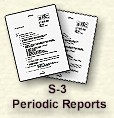
|
CONCERNING THE S-3 PERIODIC REPORTS
The S-3 Periodic Reports of the Negros campaign begin here, and
will be published in two forms:
(a)
there will be links to a pdf file copy of the document - such as we have
it; If the image is partially incomplete, then that is because the
photocopies of the declassified documents which we have obtained are
themselves incomplete. If a member, donor or benefactor wishes to
assist by obtaining a better image then we would be grateful.
(b) extracts
of relevant entries - the reports are formulaic, and consequently we will
abridge them so that
at least the continuity of the actions can be followed.
|
|
|
|

No. 1
071500 Apr 45
to
081500 Apr 45 |
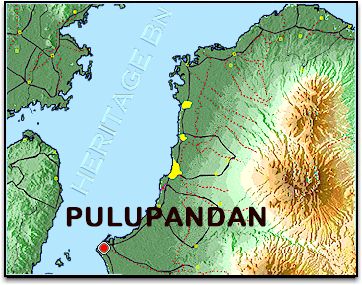 2d Bn: Arrived amphibiously at
PALUPANDAN, NEGROS from ILO ILO, PANAY 071800I. Convoyed to present bivouac
area, arriving 081800I after overnight bivouac at PALUPANDAN. Began
preparations for 090730I attack. 2d Bn: Arrived amphibiously at
PALUPANDAN, NEGROS from ILO ILO, PANAY 071800I. Convoyed to present bivouac
area, arriving 081800I after overnight bivouac at PALUPANDAN. Began
preparations for 090730I attack. |
 |
Company moved from PULAPANDAN to NAPILES RIVER
by truck. A perimeter was
set up in the morning and the afternoon security patrols were sent out
approximately 1,000 yards. No enemy contacted..” |
|
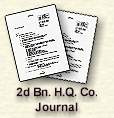 |
0001 -
Intermittent mortar and rifle fire from enemy thru the nite. One enemy
tried penetration but was stopped. |
|
0830 |
Col Jones left on reconnaissance. We'll stay in present location for
about 2a hours; setting up a few CP tents. |
|
0900 |
Native reported Japs in his home 2.5 kilometers N. Sent patrol to
investigate. |
|
1100 |
Col Jones returned. Third Bn to move to foothills about 1500. |
|
1105 |
Five tanks reported for duty with the RCT. |
|
1130 |
Ccl. Jones in conference with Lt. Dean, Major Knudson, Capt. Donovan and
Capt. Byers: Enemy situation, use of Artillery. |
|
1200 |
Still awaiting arrival of 2d Bn. I Co made contact with Jap patrol; all
automatic weapons. We had 2 KIA, 4 LWA. |
|
1220 |
Col. Jones left to check turn around. |
|
1255 |
2rd Bn arrived; moved out by truck immediately with Col Jones in the
lead. They will assume the offense at once. Division attack schedule for
a.m. Enemy well entrenched in the foothills, have elaborate defensive
set-up." |
|
The following
entries are a continuation of the "History" for 8 April, but the dates
and times in the original documents are confused. |
|
061600 |
To CO 503d RCT: Details of plane schedule and request for info about
contem-drop. (24th Division) [note: this is dated
6 April].
|
|
1040 |
To S-2: Enemy auto fire at (33.6-04.7)-(33.0-04.4). Enemy firing on us.
No arty casualties. Our casualties: 2 KIA, 4 WIA; enemy unknown (3d Bn.)
[This obviously refers to message of 1200 above].
|
|
1315 |
Serv Co arrived. Setting up vicinity of CP. |
|
1400 |
Col Jones arrived back. |
|
1530 |
Gen Brush here to discuss tactical situation.
"Old" msgs pertaining to flight over here TOO 06 April: TOR 08 April. To
CO 503 RCT: No authority at 310 Bomb Wing to release C-46 for resupply.
(CO, Rear Base)
|
|
071619 |
To CO Rear Base: Request for 1200 blankets, med supplies, water
trailers. No immediate use yet for 1st Bn. (Jones) |
|
1121 |
To CO Rear Base: Infro re watches. (S-4) |
|
1610 |
To CO Rear Base: Prepare eligibility list for arrowhead. Forward to 40th
Division prior to 14 April 1945. (Levine) |
|
1722 |
To CO, 3d Bn: Air Ln party will report to you immediately, have guide.
(Clark)
|
|
1750 |
To S-3 3d Bn: Location Co H? Contact 185th? Casualties? (Clark) |
|
1730 |
Reached mortar impact area occupied by Nips; 5 enemy KIA; 8 cars; 6
trucks;2 motor cycles. living in small huts. |
|
071205 |
Instructions from Col jones to Capt Taylor to follow in wake of 3d Bn
from Mindoro.
|
|
(Captain
Neil Taylor was the 2d Battalion commanding officer.) |
|
There are five more messages before the next series begin 10 April,
but none of the five add anything of importance.
|
|
 |
1450 - Arrived at forward position and established Bn C.P. at
(32.1-305.4) Ref. Imbang I 1:50,000. |
|
1500 |
Bn C.O. held meeting with Co C.O.'s , establishing perimeter. E
company covering direct front, D Co on right flank, F co on left flank.
E Co maintaining road block. 3d Bn to our direct front 2000 yards.
|
|
1600 |
Daily strength reports must be at Regt'l S-1 by 0630 for period
ending 2400 previous day. Have been issued 10-1 rations.
|
|
1610 |
D Co C.P. (31.9-04.9)
|
|
1617 |
E Co C: P. is located at (31.9-04.9)
|
|
1715 |
F Co C.P. Located at (33.1-305.09) [Note; obviously -05.09]
0utpost 300 yds North. Report no sign of enemy. Will pull in
outpost to perimeter at dusk. |
|
1800 |
Total blackout, all personnel dug in for the nite.
|
|
|
|
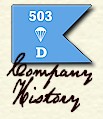 |
Company moved from Pulapandan to
Napilas River by truck. A perimeter was set up in the morning and the
afternoon security patrols were sent out approximately 1000 yds. No
enemy contacted.
|
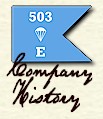 |
Broke camp at 0830 hr. Departed PuluPandan
at 1000 hr by truck and arrived at (32.3-03.6) Imbang SHI, P.I. Distance
by truck 33 mile. Set up perimeter and dug in for the night.
|
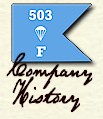 |
No entry.
|
|
|
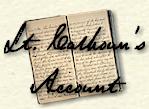 |
We loaded on trucks early the next morning and moved out on the coastal
highway, Highway
#1,
which went around the northern end of the island. This was a good,
asphalt surfaced highway. Almost all
the Japs had retreated to the hills well before we
landed. A few suicide parties had
been left. Pulapandan was about 60 miles from Fabrica
where the large saw mill was located. After moving about fifteen miles we
came to the capitol, Bacolod.
This was a fair size city, by far the largest we had seen since leaving
Australia.
Before
we reached the downtown area we passed an old frame automobile repair
shop
located at an intersection of two
streets. The building constructed so that the corner
facing the intersection was cut off
at a 45 degree angle. This wall contained two large
double door. They, like the building, had once been painted white. Now
the doors were blackened and
stained. We were told that as the tanks with the 40th came through, two
Japs ran out from behind the
building and rammed one of the tanks on its slope plate with a
shape charge on a pole. The resulting explosion spattered the Japs over
the garage doors. The tank moved on.
As
we passed through the city large crowds lined the streets waving and
cheering. On
the east side of the town the
concrete power poles had been cut off two or three feet above
the ground. This was to enable the
Japs to taxi planes down the street and park them between
the houses, hiding them under the trees. Some Jap planes were still
there where they had been
destroyed by our planes. The Japanese had a large airdrome here and a
large air force. Our carrier
strikes had destroyed most of this force. The Japs would shift their
planes from base to base trying to
evade our attacking forces. We caught them here. Our forces came
in during a heavy overcast which cleared while they were overhead. There
the Jap planes were sitting on the ground.
We
traveled on the flat coastal plains which had been great sugar cane
growing plantations.
This area of Negros, the western portion of Cebu, and southern Panay
were called "the breadbasket
of the Philippines." Traveling along Hwy. #1 we could see the mountains
10-12 miles inland and the plains
gradually rising toward them. Many large rivers had their
origins in the foot hills. There were a number of large steel bridges
spanning these rivers along the highway.
We
passed through Silay, which was a town of about 20,000 people. As we
moved through
the business section we passed
several two story buildings. Some of these had balconies
hanging over the sidewalks. These
balconies were packed with Filipinos who were waving and
cheering. On one balcony among
the people was a fair skinned woman with bright red hair.
Later in June when we were
garrisoning. Victorias, I was in Silay on several occasions and
met a pharmacist named German Gaston, nephew of Jose Ma Gaston. His home
and former pharm�acy was in
one of the buildings where I
had seen the red head. I inquired about the
woman, and he told me she was an
American who had been hidden out during the war. I believe
he said she was from St. Louis and had taught school in Silay before the
war. He said our authorities
had picked her up soon after we passed through Silay on 8 April and sent
her home.
After
proceeding east on Hwy. #1 several more miles we turned off on a gravel
surfaced road and headed toward
the mountains. We moved through the old sugar cane fields several
miles, fording a broad,
shallow river, the Imbang River, and stopped and detrucked at our first
bivouac area. There was an old
thatched covered house built on stilts about three feet off the
ground in our area. The road we were on is Tokaido Road. This is shown
on the Imbang River map as a railroad. |
|
|
� |
|
|
 |
|
|
|

|
|
9 April 1945

 |
The third platoon
under Lt. Watkins patrolled area for 1500 yards south of Co. perimeter from
0900-1145. No enemy contact. At
1735 seven rounds of enemy 40 mm AA
were received. Pvt. Macke was slightly wounded by shrapnel..” |
|
|
Phase
I of the 503rd's Negros operation began with its leading elements of crossing
the initial point at 0800 on 9 April 1945.
We entered with a force numbering 116 officers and 1670 enlisted men.
|
|
|
�F Company was
given the mission of going to and patrolling the area of SAN ISIDRO, which
was about 4-5 miles away as the crow flies . . . and then moving south
towards SINAYPANAN..”
I
remember this very well as it was the first time I had ever been under artillery
fire. The fire may have been
heavier than 40 mm. |
|
|
|
|
 |
0830 F Co with attached units left F C.P. on petrol. Capt Brazil, FA Ln
Officer Accompanied patrol. |
|
0832 |
We have a local patrol for 1000 yards on azimuth 2100 E Co. |
|
0850 |
Dog Co has a patrol out 500 yards on azimuth 183�. |
|
0930 |
We are at the river impossible to cross with tanks. F Co |
|
1111 |
We are going on without tanks. F Co |
|
1115 |
Four overhead bursts of enemy artillery fire at (33.5-04.2), one
casualty from "G" Batt Arty, attached |
|
1430 |
Have reached San Isidro. No enemy, have patrols combing river
valley. Will start for camp at 1530. F Co
|
|
1600 |
Have been fired on by enemy from vicinity of Sinaypanan, 1 KIA, 3
WIA. Will have to break contact to evacuate wounded. F Co |
|
1730 |
More enemy arty bursts directly overhead. |
|
1745 |
D Co reports 1 schrapnel (sic) casualty, slight, from arty fire. |
|
|
|
|
 |
The third platoon under Lt. Watkins patrolled area for 1500 yds. south of Co. perimeter from 0900 to 1145.
N, enemy contacted. At 1735
seven rounds of enemy 40 MM AA we4e received. Pvt. Macke was slightly
wounded by shrapnel. |
|
 |
The Co is held inreserve for 3rd Bn.
and F Co. One
squad from 2nd patt patrolling for 1000 yds on a 210� azimuth. They
report no enemy activity. We received artillery fire timed to burst
overhead. One man L.W.A." |
|
 |
The men had breakfast & company moved out at 0830 to attack San Isidro
which was the foothills of the mountains. For the mission we were
assigned 2 M-4 tanks and a demolition section. unable to cross the Imbang River, the tanks turned back 7 the
Irfantry went on. The 2nd platoon contacted the enemy in Sinapanan.
After the company had been repulsed. We returned to our previous
positions which we had occupied the night before. During this action
S/Sgt. James Jackson was fatally wounded & 1st Lt. Lee & Sgt. LeRoy Eide
were slightly wounded. |
|
|
|
|
[Note: The
Imbang River above was to the west. The correct river is the Malago
River. Confusion may have resulted
since the map we were using was the Imbang River Map.] |
|
|
|
 |
F company was given the mission of going to and patrolling
the area
of San Isidro which was about 4-5
miles away as the crow flies. Most of the locations
were named for the plantations
,e.g., Hacienda San Isidro. After reaching the this objective
on a northeast line of march we were to move south along the bank for a
half mile to Sinaypanan. Some enemy activity was suspected in this area. A company
of Filipino "Regulars" from
the 74th Infantry (Philippines) was attached to us to move on Sinaypanan
from the south. Two M-4 Sherman, tanks from the 2d platoon, C Company,
716th Tank Bn. were also attached to F Co. A forward observer, Capt. William P. Brazil
from our 462d PFA, and his
radio operator were also attached. The other attachment was a demolition
section. We had never operated with
tanks. With all this fire power we felt invincible.
Since we had all this fire power and a lot of distance to cover in one
day's time I don't think we took our 60mm mortars.
Our powerful force moved out about 0830 with the tanks following the
lead platoon.
We'd find the enemy, blast them, and
then over run them; however, our feeling of euphoria
did not last long, because soon we approached. the broad, shallow waters
of the Maglago River. The
water was about ankle deep, and the bed was of small rocks and gravel.
The tanks stopped and held a
conference. Then they announced that the crossing was too dif�ficult to attempt. The platoon leader told us that his commanding
officer had told him not to
cross and streams or obstacles which might endanger his tanks, and in
his judgment this crossing would endanger his tanks. He turned around
and left. We were of the
opinion that these guys were afraid and looking for a reason to quit.
Most of us had operated with
tanks on problems back in the States in much worse terrain than this.
We were
disgusted and formed a distrust of
the tanks which supported us that would last throughout the
entire operations.
This was not all. After we left the river we were walking through grass
about three
feet tall. Visibility was excellent.
The guerrillas should be visible on our right rear
angling off from our line of march.
They never appeared from the trees along the low
river banks. In
a short time we we had lost tanks and Infantry support. Even though they
were guerrillas 200 men would help. Our orders were to go to the
objective so on we went, help or no help.
The fields were broken by tree-lined streams. Most of the stream beds
were dry. It
was hot now, and we were sweating. Our progress was slow. The trees and
brush around the draws had to
be searched. We moved on until near noon we could see a big house off to
our left as we approached the bluffs
along the river delta. This was Hacienda San Isidro.
It was partly wrecked along with a number of buildings around it. We
reached the bluffs and fairly
tall tree growing there. The bluffs were about twenty to thirty feet
tall. At their base was a
flat delta about a half mile wide. On the far side of the delta the
terrain rose sharply. The vegetation
and trees were heavy: here. We found a small, unoccupied,
frame house almost hidden by the vegetation and trees. The back of the
house was bordering the bluff.
We sent out patrols. One went to the hacienda several hundred yards
away. There were no signs of the enemy.
After thoroughly searching the area we moved south toward Sinaypanan.
The bluffs were
on our left. Not far from the bluffs
was a shallow river. Across the delta near the foot-hills was
another shallow river.
Sinaypanan was in view all the way. The land rose here, and there was a
grove of trees
where a house had once stood. When
we were within about 300 yards of the trees the enemy
entrenched there opened up with
heavy automatic and rifle fire. We were caught out in the
open open field and under intense
fire. Fortunately a broad drainage ditch, some fifteen
feet wide and four feet deep, was nearby. *re
made it into the ditch by running a few steps,
hitting the ground, crawling a few steps, and then running again. After
everyone was in the ditch we
assessed the damages. S/Sgt James Jackson had been hit in the body and
was paralyzed from his waist
down. 1st Lt Dan Lee, 3rd platoon leader, had been hit in his thigh.
Sgt LeRoy was, also, wounded,
also hit in the
left
thigh.
Now we were in a bad situation and needed fire support. Capt Brazil said
right off
that he was afraid the artillery
might not reach Sinaypanan. He called for a registering
round at extreme range. We waited
expectantly, hoping the artillery would be able to place effective fire
on the Japanese position. To our great disappointment the first round
was well short of the target. We could see the round burst out in the
open field at least a quarter of a mile short. Capt Brazil had them try
several rounds, but
to no avail. We were beyond our artillery's range. We felt isolated and
alone. Usually a light machine gun platoon from 2r Battalion
Headquarters Company was attached, but
in this instance battalion had not done so. To get to the Japs we had to
cross several hundreds yards of open field. To do this without support
was suicide.
I do not know what Bill Bailey had in mind, and before we could discuss
it someone called out that the Japs were running. Unbelieving I stood up
looking at the position the Japs occupied. I could see a miracle
happening. The Japs were running through the trees to the bluffs. We
moved to the former Jap positions and the buffs. There they were far out
on the delta crossing the most distant stream and disappearing into
forest. We could see a good size force of fifty or more men with several
machine guns. They were carrying the guns still mounted on their
tripods, the carriers on each side carrying a leg. The aerial machine
guns mounted on fabricated tripods were-hard to separate, so the crews
carried them in one piece.
We were sure that our artillery had frightened them, and they were
getting out before a heavy barrage struck them. After the war while we
guarding the Jap prisoners at Fabrica, I asked the Japanese major in
command to see if he could find anyone who had been at Sinaypanan that
day, and if he could I wanted to talk to him. He found a lieutenant who
had, indeed been there that day. I had him brought up with a warrant
officer to interpret. The Jap said they were well dug in and expected
artillery fire. They had received word that a large force with two tanks
were coming their way. They had no anti-tank weapons, and knew that with
the broad river delta behind them, they would be trapped when the tanks
arrived; therefore, they got out while they could. I was amazed.
It was now past mid-afternoon, we had three wounded men, so we did not
tarry. Litters had to be fashioned out of staves and ponchos. Lee,
although the bullet had gone through the upper inside pert of his thigh,
insisted on walking. He made it, but in much pain particular toward the
end. Bill Bailey was also suffering. We did not know it but he was sick
with hepatitis (they called it "infectious hepatitis" back then). Both
he and Lee staggered in on guts. Sergeant Eide's wound was such that he
had to be carried on one of the improvised litters. Jackson, of course,
had to be carried. He was in good spirits laughing and joking with us,
telling us that he didn't have to walk back like the rest of us. He was
a small man with sandy colored, wavy hair, and a mustache. He was always
in good spirits, and well liked by the entire company. Even though we
were forewarned of the prognosis, we were stunned to receive the message
that this brave brother died three days after he was wounded.
Now every squad leader in the 2d platoon who had jumped on Corregidor
was dead: S/Sgt Charles Hoyt, S/Sgt Donald White, and S/Sgt James
Jackson.
We got back to our perimeter of the night before about dark. Bill Bailey
and James Jackson were evacuated. Bailey's illness would hospitalize him
for almost two months. As executive officer I would assume command of
the company in Bill's absence. 1st Lt William C. Mathers commanded the
1st platoon, 1st Lt Robert L. Clark commanded
the 2d
platoon, 2d Lt Chalmers Fennel commanded the 3d platoon, 2nd
Lt Leroy T. Elliott commanded
the 4th (mortar) platoon, and 2d Lt Milton Walker acted as executive
officer.
Thus F company entered into the Negros fray, and after one day had one
experienced combat
officer, two newly commissioned officers who had combat experience as
non commissioned officers, three
replacement officers fresh from the States. We had lost some good non-commissioned
officers and some good men who would have made good non coms.
|

No. 2
081800 Apr 45
to
091600 Apr 45 |
|

No. 3
091600 Apr 45
to
101600 Apr 45
|
|
|
|
|
|
� |
|
|
 |
|
|
|
|
|
10 April
1945

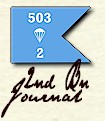 |
0001 - Usual nitely infiltration and repulses. |
|
0820 |
Col Jones left for usual morning recco. |
|
0840 |
Div ordnance here to pick up recovered Jap automobiles and trucks, 0908-
To CO, Rear Base: Adm re Rotation, (LeVine) |
|
0926 |
To CO, 503 RCT: Adm: Rotation, (Rear Base) |
|
1258 |
Col Jones returned from his recco trip. Rcn patrols out; no contact;
slow progress; many casualties for us- not so many for them. Terrain is
contin�ous series of ridges, heavily defended, and positions well dug.
Unsuitable for our five tanks, which have been firing at 3000 yds. |
|
1400 |
326 guerrilas attached for tactics and rations. |
|
1500 |
20th Portable Station Hospital joined the RCT: 23 EM, 3 Officers. |
|
0745 |
0745- To S-2, RCT: 091530 E Co patrol fire vicinity SINAYPANAN . 1 enemy
KIA, i HMG and small arms fire. About 200-250. (C), 2d Bn)
|
|
0800 |
To CC, RHQ Co:: No casualties (Cornett) |
|
0800 |
To CO, 185th: 3d Bn 503 advancing as planned. Co to MALISBOG on lookout
for donald patrol, your situation: (1N 0 185th)
|
|
0835 |
To CO 503: Will arrive beach 1500 with 3 water trailers. (Holm)
|
|
0900 |
To CO Rear: Request for ARC bundles. (Kamer) |
|
0900 |
To CO Rear:Request for resupply. (Atkins) |
|
0908 |
To CO Rear: Adm Re: Rotation. (LeVine) |
|
|
|
|
This is enough of the RCT S-1's history to give a good idea of the great
amount of administrative detail involved each day. I shall discontinue
transcribing this document except for items of interest.
|
|
-o-0-o-
|
|
|
|
 |
0800 - D Co moved out on recco patrol to vicinity of (35.5-00.2) |
|
0822 |
10 C.O. D Co. Be on the alert for the 185 Inf patrol near point 5.
1125 Nine bursts of overhead enemy arty fire over CP & F Cp area, 2 WIA
1200 Received orders to move Bn forward.
|
|
1345 |
All units moved put for new positions (35.4-04.6) with exception of D
Co out on all day patrol. D Co will return to old CP site and join Bn in
the morning.
|
|
1600 |
Bn CP area received enemy small arms from in front of "G" Co position.
1730 More enemy arty fire overhead, four bursts, no casualties.
|
|
1840 |
11 To Hq, E, F Cos. Put your booby out- advise when they are
armed. CO 2d Bn
|
|
|
|
|
10 April- We were taking it easy after leisure breakfast of field
rations (10-in 1). Suddenly several artillery rounds bursts overhead
about the height of the coconut trees. These shells had proximity fuses
and were fired from a dual purpose 75mm gun. Pvt Anderson
(Private
Donald S. Anderson)
was struck by shrapnel and fatally wounded. |
|
|
|
|
|
|
|
|
|
|
� |
|
|
 |
|
|
|
S-3 Periodic Report
Number 4 is reproduced in content to give the casual reader a conception of what it
was. In the following P.R.'s, though, only pertinent parts of the reports
will be given. Notable is the fact that as time progresses, the reports
become more complete. For example: under "Artillery:" the number of rounds
fired during a 24 hour period will be given. During the early part of the
operation the supply of artillery and mortar ammunition was
very limited- in the eyes of
some of us at the company level criminally so. We lost lives as a
consequence. Our apprehensions of the 8th Army were proven. General Krueger
always stockpiled a thirty day supply of ammunition and supplies
before beginning an operation. It was this soldiers' general who had
admonished junior officers sometime.. yet now so long ago
at
Gordonvale too, "Take a kindly interest in the welfare of the men." So
simple these few words, yet so well understood by the officer who loved his
men - and so lacking under General Eichelberger. |
|

|
S-E-C-R-E-T
HEADQUARTERS
FROM: 101600 Apr 45.
TO : 111600 Apr 45.
S-3 PERIODIC REPORT
No. 4
MAP: NEGROS, 1/50,000
1. LOCATION OF
TROOPS: See Overlay.
2. WEATHER AND VISIBILITY: Very warm and partially overcast.
3. OUR OPERATIONS:
a. Infantry:
After a night of nil activity, our assault Bn. resumed the attack behind
artillery and mortar barrage. As the advance progressed it was met by MG
fire at 36.7-00.3. A fire fight ensued. The positions were silence, and two
machine guns and one 20 MM were found demolished. Two enemy dead were found.
"E" Co. was brought up on the right flank and the attack continued with
three companies abreast. The advance had been a continued fire fight against
pillboxes and entrenched riflemen on both sides of the route of advance. As
the period closed, the fire fight was continuing. Our troops are employing
tanks and artillery where ever practicle (sic. The 3d Bn 74th (Philippine)
Infantry made a reconnaissance patrol to the left flank to point
(36.6-04.0), returning with the information that a native reported
approximately 40 enemy were bivouaced at (37.0-03.0). This will be
investigated. Our left flank patrol con�tacted a patrol from 185th inf. at
(33.3-01.3) 1130I.
b. Artillery: The
Artillery supported our advance with fire on points (37.3-00.9),
(37.6-99.5), (38.6-98.6), (37.3-99.0). Interdictory fire was placed on
(37.6-99.3) during the night 10-11.
c. Tanks: Out
attached tanks advanced along with our leading elements and gave direct fire
support where needed.
d. Engineers:
Maintained supply route road and surveyed for lateral routes for future
operations to out flanks.
4. RESULTS OF OUR OPERATION: Our advance has continued slowly against
a well entrenched enemy heavily armed with automatic weapons. By using all
weapons at our disposal the enemy is slowly retreating into the hills. As
yet we have had no artillery fire returned. A few rounds of 40 MM at various
intervals have been employed by the enemy.
5. CASUALTIES:
a. OUR CASUALTIES:
Today, 3 KIA 13 WIA. To date: 10 KIA (incl 1 DOW), 26 WIA
b. ENEMY KNOWN
CASUALTIES: Today: 2. To date: 16
(Signature)
CLARK
S-3 |
|
|
� |
|
|
 |
|
|
|

No. 4
101800 Apr 45
to
111600 Apr 45

|
 |
At 0800 the Co.
under Lt. Nickle started south on a patrol. At 1130 2nd platoon commdr. Lt.
Preston observed enemy AA fire bursting in vicinity of Bn CP and located
position of EN battery. Artillery observer, Lt. Hennessey, directed counter
battery fire without results. Co. returned to perimeter at 1800 with-out
contacting enemy. |
|
 |
Moved 4000 yd's S.E. and set up WPA perimeter in rear of 3d BN. Our position
is (35.9-302.2). We received six rounds of enemy arty. fire. No casualties. |
|
 |
No entry |
|
|
� |
|
|
 |
|
P.R. No. 5 will be not be placed
here, because the major activity period covered is 12 April. The coverage is
111600 April-121600 April- 4 P.M. of the 11th until 4 P.M. the 12th.
Therefore, the major period, 11 April was covered in P.R. No. 4. P.R. No. 5
will be placed with the 12 April entries.
|
11 April
1945

|
 |
0845 - D Co
rejoined the Bn & assigned position.
|
|
0915 |
E Co patrol recalled and entire company and attached units moved forward to
position of right flank of "H" Co. Capt Taylor & Lt. LaVanchure moved out
with "E" Co.
|
|
 |
At 0800 Co.
entrucked and moved four miles relieving E Co.
Security patrols were sent out and discovered 3 enemy KIA by artillery or
mortar fire. AI 0230 Jap patrol contacted perimeter. 1 enemy KIA. |
|
 |
The entire company with LMG's atch. moved out to support the right flank of
3rd Bn. No action. At 1600 Hr. Dog Co. relvd us and we returned to our
original position and took up our perimeter. |
|
 |
No entry. |
|
|
� |
|
|
 |
|
|
|
|
12 April 1945

|

No.5
111600 Apr 45
to
121600 Apr
45il 45
|
Our Inf resumed the
southeasterly attack after a heavy artillery barrage with three companies
abreast on parallel ridges. Mortar barrages from the 4.2 chemical mortar
platoon preceded each advance, which though slow was steady. Enemy
mortar, rifle, and MG fire was encountered during prac�tically the
entire advance. One .50 cal. MG was demolished (37.1-99.3). Two enemy
dead found at this position. One .50 cal. MG and one 37mm antitank gun
were demolished at 937.4-99.8)." Results: Enemy to evacuate casualties,
so we cannot count."
|
|
 |
1430 - D Co moving abreast with "G" Co met enemy small
arms fire, one WIA.
|
|
1800 |
Night fighters bombed enemy positions with napalm bombs. |
|
|
|
|
|
|
|
 |
Co
advanced on foot approx 1000 yds. and received enemy automatic fire. Pvt
Ross wounded in leg. At 1300 LMG's fired on enemy position without visible
effect.
|
|
 |
Local patrols by 1st platt.
|
|
 |
Company attempted to attack an enemy held ridge.
1st Lt Wm. Bailey went to the hospital & command of Co. was temporarily
taken over by 1st Lt. Wm. Calhoun."
|
|
When someone
was recording the history about two months later they must have been
confused about this date, because F Company did not attempt to make any
attack during this time. I think they are confusing this date with 9
April when F Company attempted to drive the enemy from the slightly
higher
ground
(certainly not a ridge) at Sinaypanan. 9 April was also the day
Lt. Bailey went to the hospital.
|
|
|
� |
|
|

"
|
|
|
|
|
|
13 April 1945

 |
[Note: in this report
"E" Company is no longer in the
assault group with the 3d Battalion]. |

No. 6
121600 April
to
131600 April |
E Co. reinforced with
K Co.,
74th (Philippine) Inf.,
began a two day
reconnaissance
patrol in
SINAYPANAN (36.6-07.5)
area. Arriving at the area at 1330I, evidence of recent enemy
occupation were found in burnt ammunition dumps, 2 destroyed .50
cal. aircraft MG's and 300 rds. of knee mortar ammunition which
was destroyed. The vicinity was searches without contact. The
patrol will remain in SINAYPANAN during the night 13-14 and
resume its reconnaissance 14 April. A one squad patrol from E
Co. making a left flank reconnaissance encountered enemy
automatic fire at (38.7-00.9). The patrol patrol withdrew and
called for Bn. mortar support on the position. report of the
mortar fire effectiveness had not been received at close�of the
period. A one squad reconnaissance patrol from F Company
searched the right flank area to the south to MALISBOG RIVER at
(33.8-06.2) with nil contact. A red smoke signal of a 185th Inf
patrol was sighted, but physical was not made. D Company was
withdrawn from the right flank position. One platoon of F
Company took up position on ridge (37.5-98.7). I Company
patrolled the draw on the right flank 927.8-99.00). No enemy was
encountered by either. Twenty-five enemy dead were counted
daring the period (16 reported by telephone to 40th Div
121800I). One dual purpose 3 inch gun, one 29mm, one American
BAR, two Scheeser automatic pistols, two modified 7.7mm
MG's, one knee mortar plus rifles found vicinity (37.7-99.4).
2d Bn, 74th (Philippines) Inf. provided Regt. C.P.
perimeter and supply route defense during period.
Results: Due to airstrikes no forward effort during the day.
Flank patrol with one enemy contact (38.7-00.9). The vicinity
of SINAYPANAN (36.6-07.5) was established as a point of exit or
entrance to enemy's main position from the north.
|
|
|
|
 |
0700 - E Co with company of 110 Filipino Guerillas
to move out 0800 hrs to . _..patrol Sinaypanan area..
reported enemy activity. |
|
0830 |
One sq of E co moved out to patrol area of (38.7-00.1) legt from Bn C.P.
|
|
0840 |
2nd Bn C.P. moved forward to establish Hqs at
(36.2-00.2).
|
|
1024 |
To C.O. 2d Bn- We are 200 yds due north of check
point #1. Have observed activity on high ground to North.
searching area. Sqd. C.O. E Co.
|
|
1150 |
To C.O. 2d Bn.- now at (36.0-05.5) heat
is bad, resting & getting
water above Calaptan river, no enemy encountered. Sqd C.O. E
Co.
|
|
1305 |
to CO 2d Bn. Have one (1) WIA and no aid
man with patrol. Can
you offer assistance. Sqd C.O. E co.
|
|
1312 |
To C.O. 2d Bn- Pinned down by automatic
fire need reinforcements. Sqd C.O. E Co.
|
|
1430 |
E Co Squad patrol withdrawn after contact with enemy,
with loss of one (1) KIA & one (1) WIA. Unable to recover
body of KIA at this time. Mortar fire ordered to neutralize
target. Two (2)enemy KIA.
|
|
1500 |
To C.O. 2d Bn- Recon shows Japs force of
undetermined size de�ployed along this line (37.7-07.8) to
(38.8-07.2) Will recon that area in the morning. Sqd C.O. E
co.
|
|
1800 |
E Co. with company of guerillas atch found evidence of
recent evacuation, burned ammo dumps, two well oiled 50
cal aircraft MG (destroyed), 300 rds knee mortar ammo not
destroyed in vicinity of Sinaypanan. Trails into hills
traveled this morning. F Co patrolled vicinity of
(33.2-00.2) reported no activity. D co. thoroughly patrolled
draws & ravines forward of D Co C.P. (36.2-99.3). Enemy
had well defended positions on trails with foxholes
averaging 3 ft. depth. |
|
|
|
 |
Co was relieved by F Co.
and moved approximately 900 yds north and set up perimeter." |
 |
The entire co minus one squad
from 3rd platt attch. L.M.G. section and a co. of 110 guriellas
(sic) moved out at 0800 hr with the mission of patrolling the
area north to Sinaypanan. No resistance encountered. Japs had
evacuated. Mortar and 3 50 cal M.G. in working order. Set up
perimeter and prepared to hold area. |
 |
No entry.
|
|
|
� |
|
|
 |
|
|
|
|
|
14 April 1945


No. 7
13600 April
to
141600 April. |
E Co on combat
patrol in vicinity of SINAYPANAN (36.6-07.5) observed in
estimated 100 enemy vicinity (37.5-06.7). Artillery brought to
bear landed in the area and enemy scattered to hills. Casualties
estimated at 20. Resupplied by air E Co. continued patrolling
the area with nil contact, however there were many indications
of recent occupation of the area by the destroyed equipment and
abandoned dug-in positions. A group of approx. 100 Filipino
civilians were contacted evacuating from the hills vicinity of
CANCILAVAN (36.8-09.7). This group reported the enemy to have
withdrawn into the hills to the SE. A combat patrol to
(37.0-01.6), (37.5-02.9) and (37.0-01.5)reported enemy abandoned
enemy positions vicinity (37.0-01.8) which contain a great
quantity of rice and sugar, one AC .50 cal. MG, one 20mm gun
with 500 rounds of ammo for both guns. All were destroyed. The
body of our KIA of 13 Apr. was discovered. Combat patrol to
(35.7-03.6) reports all negative. Reconnaissance patrol south to
(34.9-99.1) reported nil contact but sign of enemy occupation
four or five days old." |
| |
|

0730 14 Apr 45 to
200 14 Apr 45 |
00730
-
No forward movement for three days as air strikes are scheduled for that
period to neutralize enemy positions forward. Bn less E Co will confine
activities to_ flank patrols. E Co still in Siaypanan area with orders
to clear this vicinity. F Co observed
15 to 20 enemy last night (2000 hrs), laid down heavy mortar fire with
unknown effects. 6 enemy observed at 2045 hrs in same area. |
|
1000 |
255 Rations, radio batteries & one
case of red smoke bombs dropped by two L-5 making eight trips.
Guerillas rations included in 255 figure. |
|
1010 |
One squad of
E Co returned to Bn CP bringing in Capt Gibson of FA who was
ill. Artillery liasion (sic) with E Co by L-5 only. |
|
]145 |
E Co reports 75-100 natives coming out of the hills in vicinity of
Cancilavan. Native report Japanese back in the hills. |
|
1200 |
Air strikes by A-20's over enemy positions to our front about 3000
yards. |
| |
|
| |
FROM: 1420 14 Apr 45 TO: 1700 14 Apr 45
|
|
1420 |
E
Co C.O. Sqd Ldr Sgt Elder left Bn C.P. 1300 hrs enroute your position.
Request complete report on today's activities at 1530. Sgd C.O. 2d Bn. |
|
1420 |
To all companies and units: Personnel will be dug in at least (2) two
feet below surface of ground due to possibility of enemy night attacks.
C.O. 2d Bn. |
|
1655 |
To Pit. Ldr. 81MM. No more than (12)
twelve rds og Mortar Ammo per gun, per day, will be expended
T.F.N. C.O. 2d Bn. |
|
1655 |
To all Co's & units: Release mortar fire until advised to the contrary.
Booby traps will be placed at 1900 hrs, at discretion of Co C.O.'s. No
movement o.)tside of Bn perimeter after 1900 hrs. Sgd C.O. 2d Bn. |
|
17OO |
Air strikes continued by A-20 & P-38. An A-20 was downed today.
At first believed by 4.2 mortar fire. It is doubtful that this was the
cause of the crash as the plane continued in flight, intact disappearing
over the ridge. Routine patrols out to our flanks. Patrols recovered
body of KIA of yesterday (Kirkpatrick - E Co) recovered TSMG & BAR. |
| |
|
 |
At 0930 the 1st pit., under Lt. Mara, with 20 guerril�las attached mover
out to patrol the south bank of the MULAGO RIVER. Patrol returned at
1430 having contacted no enemy. The remainder of the Cc. under Lt.
Nickle crossed the MULAGO RIVER to patrol the MANZANARES area. At 1200
the patrol received sniper fire, but the enemy could not be located. No
casualties resulted. At 1400 patrol recovered bodyof E Co. soldier KIA
13 Apr. at Menzanares. Returned 1600." |
 |
Local patrols today. Everything mound indicates that the Nips are moving
back into the hills and joining their main body." |
 |
No entry. |
| |
|
|
[Note: Mulago River and
Malago River are the same] |
| |
� |
|
|
 |
|
|
|
![]()


 2d Bn: Arrived amphibiously at
PALUPANDAN, NEGROS from ILO ILO, PANAY 071800I. Convoyed to present bivouac
area, arriving 081800I after overnight bivouac at PALUPANDAN. Began
preparations for 090730I attack.
2d Bn: Arrived amphibiously at
PALUPANDAN, NEGROS from ILO ILO, PANAY 071800I. Convoyed to present bivouac
area, arriving 081800I after overnight bivouac at PALUPANDAN. Began
preparations for 090730I attack.









